
(a)
Interpretation:
The complete, detailed mechanism for the given reaction is to be drawn. The major product is to be predicted.
Concept introduction:
Phosphorus tribromide (
Answer to Problem 17.67P
The complete, detailed mechanism and the major product for the given reaction is drawn as shown below:
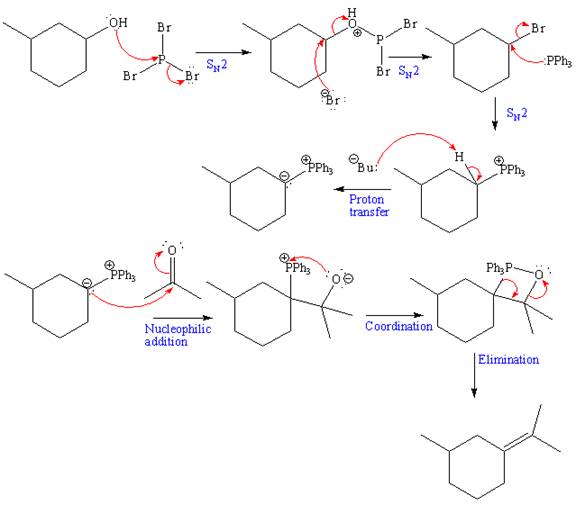
Explanation of Solution
The given starting material and reagents are as shown below:
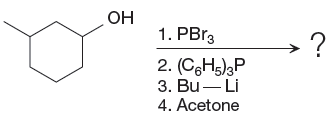
The reagent used for the first step of this reaction is Phosphorus tribromide (

The above formed alkyl bromide further undergoes an

The above Wittig reagent undergoes Wittig reaction with acetone. In a Wittig reaction, the
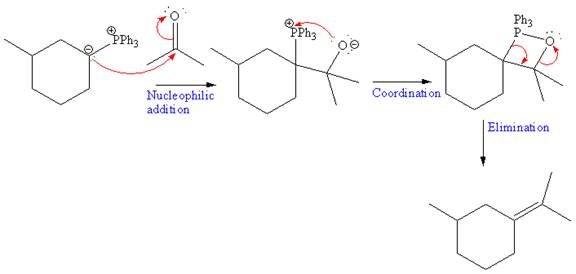
The overall mechanism and the major product of the given reaction is as shown below:
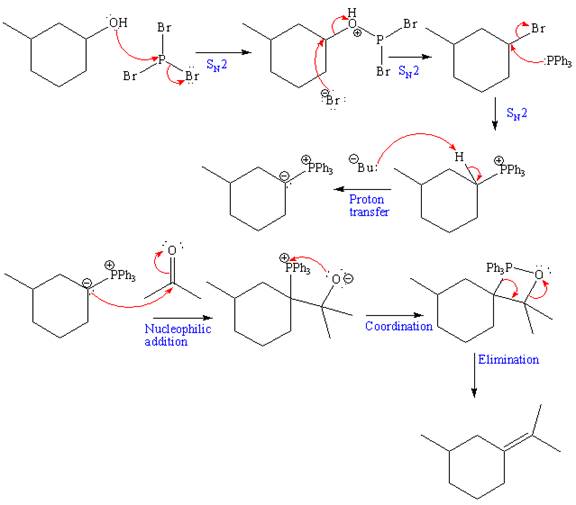
The product of the given reaction and complete mechanism is drawn on the basis of the given reagents.
(b)
Interpretation:
The complete, detailed mechanism for the given reaction is to be drawn. The major product is to be predicted.
Concept introduction:
The
Answer to Problem 17.67P
The complete, detailed mechanism and the major product for the given reaction is drawn as shown below:
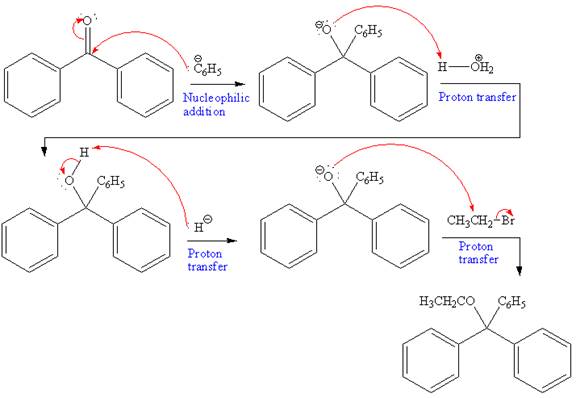
Explanation of Solution
The given starting material and reagents are as shown below:

In the first reaction, a new C-C bond is formed and a phenyl group is added to the carbonyl carbon. Grignard reagents can react rapidly with
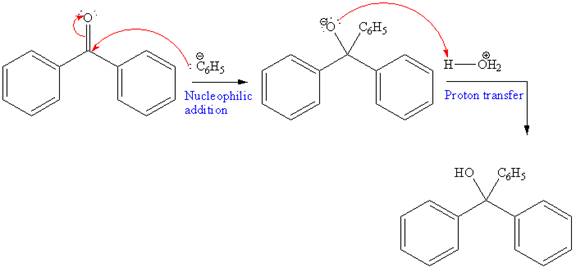
Further, this alcohol undergoes deprotonation by NaH to form negatively charged alkoxide. This alkoxide acts as a strong nucleophile and attacks ethyl bromide via
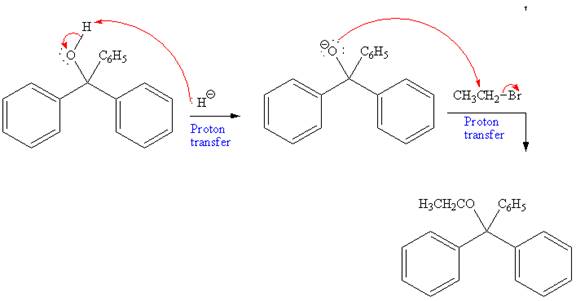
The overall mechanism and the major product of the given reaction are as shown below:
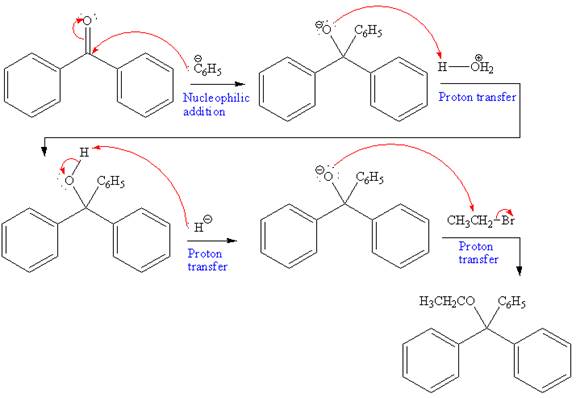
The product of the given reaction and complete mechanism is drawn on the basis of the mechanism for Grignard reagent and Williamson ether synthesis.
Want to see more full solutions like this?
Chapter 17 Solutions
Organic Chemistry: Principles and Mechanisms (Second Edition)
- I have some reactions here for which I need to predict the products. Can you help me solve them and rewrite the equations, as well as identify the type of reaction? Please explain it to me.I have some reactions here for which I need to predict the products. Can you help me solve them and rewrite the equations, as well as identify the type of reaction? Please explain it to marrow_forwardDraw the major product of this reaction. Ignore inorganic byproducts. Problem 17 of 35 1. CH3CH2Li O H 2. Neutralizing work-up @ Atoms, Bonds and Rings Draw or tap a new boarrow_forwardWill this convert the C=O to an alcohol? Or does its participation in the carboxy group prevent that from happening?arrow_forward
- I have some reactions here for which I need to predict the products. Can you help me solve them and rewrite the equations, as well as identify the type of reaction? Please explain it to me.I have some reactions here for which I need to predict the products. Can you help me solve them and rewrite the equations, as well as identify the type of reaction? Please explain it to marrow_forwardDon't used hand raiting and don't used Ai solutionarrow_forwardCould you explain and label how this was determined for the functional groups? Please highlight the areas and show me as well.arrow_forward
- I want to know how to do it , please helparrow_forwardHelp me i dont know how to do itarrow_forwardCan you explain how to draw a molecular orbital diagram for the given molecule? It is quite difficult to understand. Additionally, could you provide a clearer illustration? Furthermore, please explain how to draw molecular orbital diagrams for any other given molecule or compound as well.arrow_forward
- Curved arrows are used to illustrate the flow of electrons. Using the provided starting and product structures, draw the curved electron-pushing arrows for the following reaction or mechanistic step(s). Be sure to account for all bond-breaking and bond-making steps. Prob 10: Select to Add Arrows THEarrow_forwardCurved arrows are used to illustrate the flow of electrons using the provided starting and product structures draw the curved electron pushing arrows for the following reaction or mechanistic steps Ether(solvent)arrow_forwardThis deals with synthetic organic chemistry. Please fill in the blanks appropriately.arrow_forward
 Organic Chemistry: A Guided InquiryChemistryISBN:9780618974122Author:Andrei StraumanisPublisher:Cengage Learning
Organic Chemistry: A Guided InquiryChemistryISBN:9780618974122Author:Andrei StraumanisPublisher:Cengage Learning
